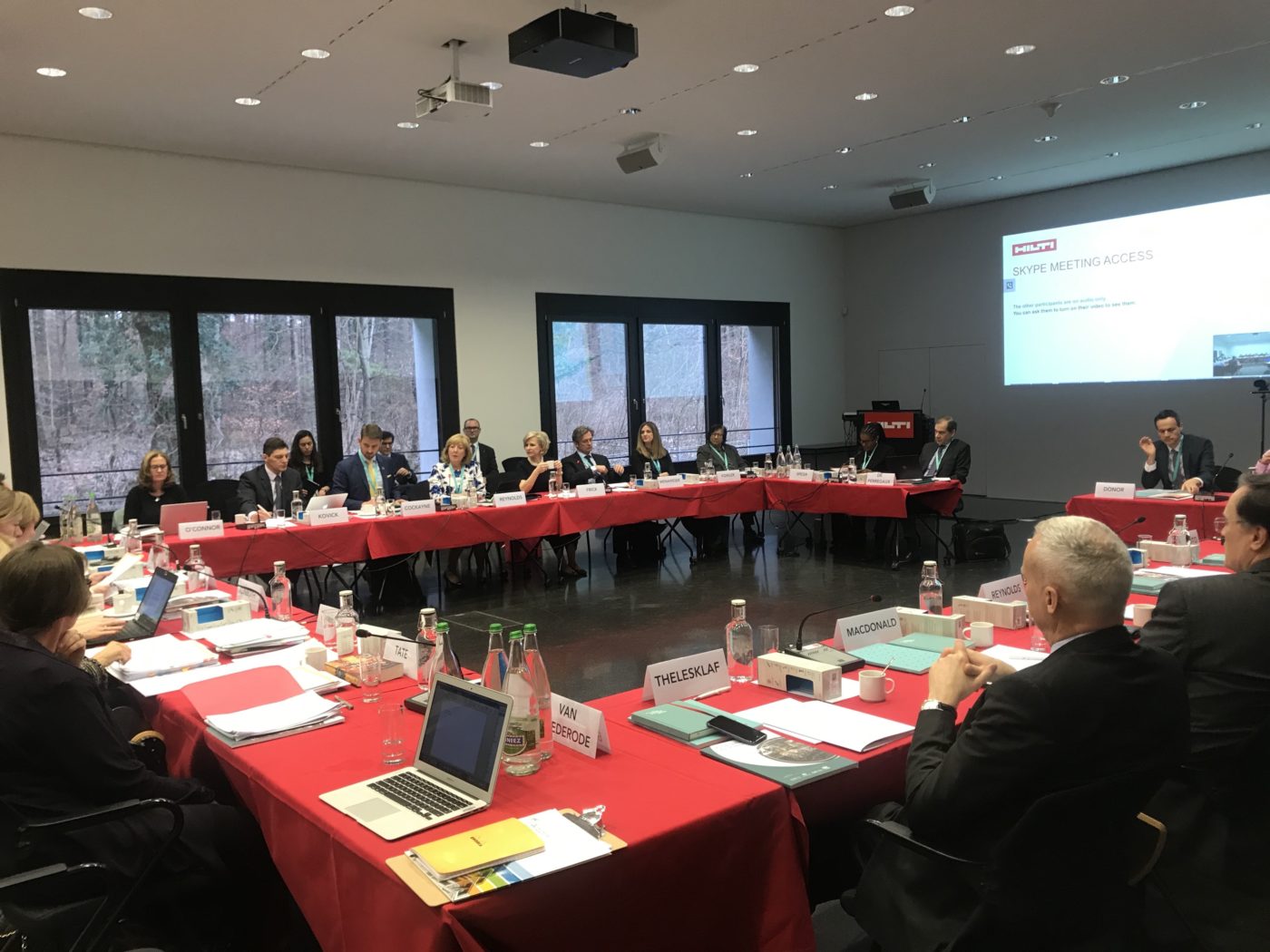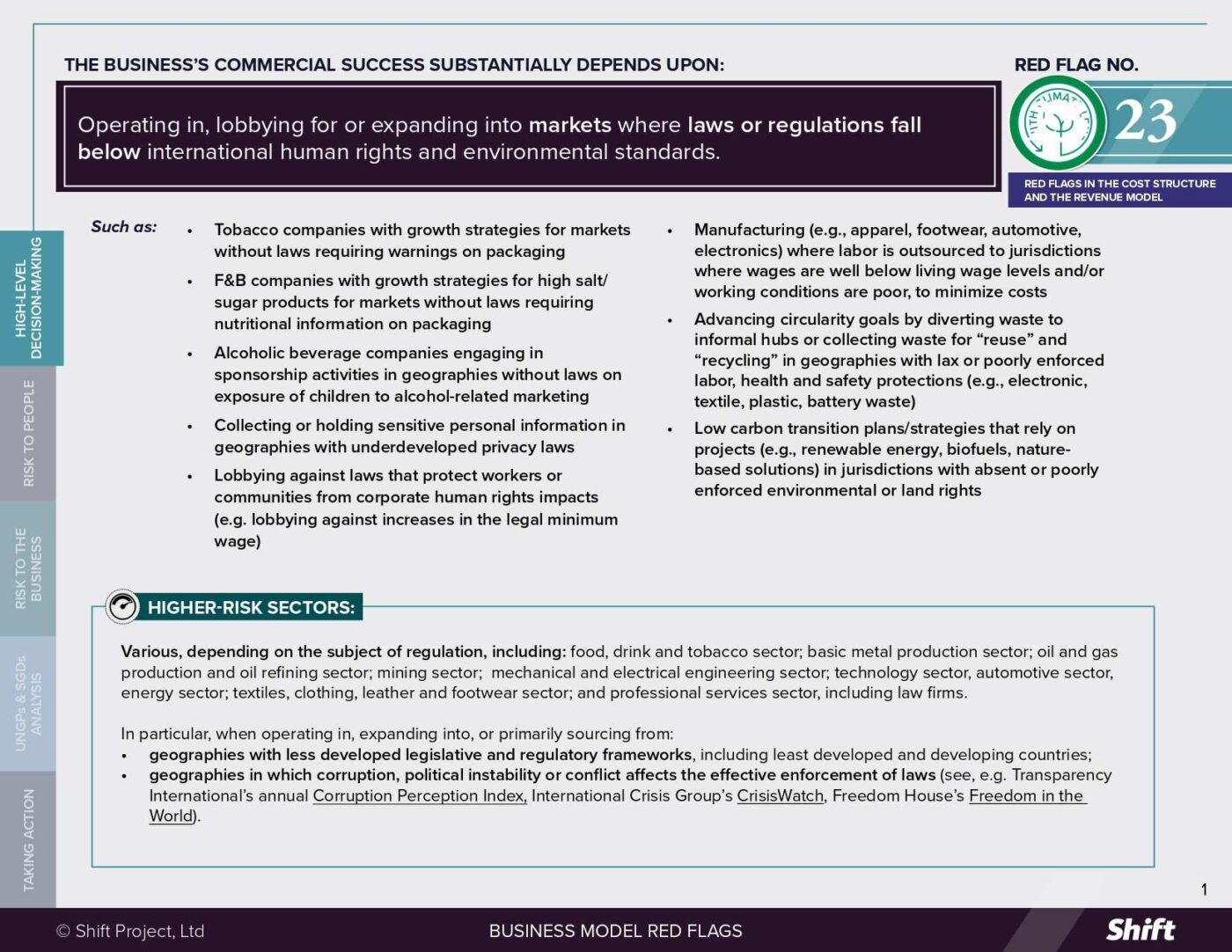The Remedy Gap
There is much debate about the roles and responsibilities of financial institutions when it comes to respecting human rights. But there is one point on which we can all agree: in too many cases, remedy is not available for people who are harmed by business activities, which are often connected in some way to the products and services of global financial institutions.
While there are many reasons for this remedy gap, two seem to emerge time and again:
- First, impacts are often remote. Sometimes they occur in the global operations of clients or portfolio companies directly, but often they are even deeper within these businesses’ value chains. It can be challenging for a financial institution or any business that is far away and poorly-equipped to investigate allegations of impacts to establish facts on the ground, particularly when those facts might be disputed.
- Second, the primary responsibility for providing remedy will often rest with other parties who caused or contributed to the harm, rather than the financial institution itself. Yet these parties are often less aware of their responsibilities, less committed to meeting them, and less equipped to do so. Meanwhile, businesses further up the value chain often default into thinking that remedy is less relevant for them because they did not cause the harm.
The Current Conversation on Financial Institutions and Remedy
In too many cases, remedy is not available for people who are harmed by business activities, which are often connected in some way to the products and services of global financial institutions.
At Shift, we have worked for several years with a wide range of financial institutions and their stakeholders, including commercial banks, export credit agencies, national development finance institutions and institutional investors. Throughout our engagements, we’ve seen how those making efforts to address the remedy gap often approach it through a well-intentioned yet limited lens.
Much of the focus has been on ensuring that financial institutions establish their own grievance mechanisms to address impacts they are connected to through clients and portfolio companies. Although such mechanisms have an important role to play, they alone are unlikely to close the remedy gap in a meaningful way. Most will face significant challenges in accessibility, even before facing the related challenges around remoteness. For example, stakeholders may not know which financial institutions are connected to a business causing an impact when seeking to resolve complaints. Institutions will also only be able to deliver remedy if the parties causing the harm – clients, their supply chain partners, and other entities they may be connected to – participate constructively in the mechanism.
We’ve also focused on the question of financial institutions’ responsibility, seeking to clarify the circumstances under which contribution to a harm can be established (creating a clear responsibility for contributing to remedy). This, too, is an important conversation. However, these debates are often contentious, and even if we establish criteria, will continue over how these apply to each particular circumstance. And regardless, there will still be a substantial number of impacts financial institutions remain linked to where they will not have a responsibility to contribute directly to remedy, but where they will be expected to use leverage to seek to address the impacts going forward.

Senior Advisor David Kovick presents a briefing paper on modern slavery in the financial sector to members of the Liechtenstein Initiative. (Courtesy of the Liechtenstein Initiative)
Expanding the Conversation: An Ecosystem Approach to Remedy
At Shift, we have been thinking about how to unlock current conversations on responsibility, remedy and financial institutions. And we have found it quite helpful to expand the focus of current conversations to ask an additional set of questions.
Rather than focusing solely on who is responsible for providing remedy, we are asking who can play what roles in enabling remedy.
Rather than concentrating solely on whether a global business or financial institution should build a grievance mechanism, we have been asking what roles a financial institution can play to strengthen the broader grievance architecture.
And, rather than focusing solely on who is responsible for providing remedy, we are asking who can play what roles in enabling remedy.
We call this a remedy ecosystem approach. It’s not about shifting responsibility. Rather, it’s an integral part of meeting responsibility by thinking about how financial institutions can use their leverage differently to enable remedy in practice.
- The ecosystem framing brings a focus to preparedness for remedy, by asking how financial institutions can use their leverage to strengthen the grievance mechanism architecture, and how they can build their leverage with clients at an early stage, before impacts occur. For example: What criteria could help financial institutions better prioritize those client relationships where effective grievance mechanisms are more critical? What set of questions could help financial institutions better assess the effectiveness of the pathways that exist to raise concerns about impacts? What type of support could financial institutions proactively provide to strengthen those mechanisms? What types of up-front commitments, contract clauses, and conversations with clients could help build more leverage for remedy if impacts should occur down the road?
- It also transforms how we think about enabling remedy in specific cases, by exploring a range of ways financial institutions can use their leverage once impacts have occurred. For example: What roles could financial institutions play in bringing a greater focus to conversation about remedy when severe impacts occur? What steps could financial institutions take to support joint-fact finding between affected stakeholders and businesses when impacts are alleged to have occurred, but the facts are disputed? How could financial institutions best use their leverage to ensure quality of process when grievances are raised through various channels.
Putting the Ecosystem into Practice
We have been exploring the elements of this ecosystem approach over the past several years with a number of our partners, including individual financial institutions, industry associations, civil society organizations, and multi-stakeholder platforms. The way it shifts conversations from a purely adversarial and defensive posture into a constructive dialogue about getting to more meaningful outcomes for people has been eye-opening.
The ecosystem framing brings a focus to preparedness for remedy
We first started exploring this ecosystem approach in our 2014 report on remedy and grievance mechanisms. We have since introduced this approach in a briefing note for the Financial Sector Commission on Modern Slavery and Human Trafficking, and in some depth in the expert advice we provided to the Equator Principles Association to inform the Equator Principles update process in 2018. We have also been helping shape conversations in the Dutch Banking Sector Agreement, which will soon publish a paper starting to explore this ecosystem approach in asset-based financing and corporate lending.
We are excited to see how the remedy ecosystem approach can help break through some impasses that have often prevented the financial sector from meaningfully addressing remedy. We look forward to continuing the dialogue with financial institutions and stakeholders, and seeing how these concepts are applied in practice.
Learn more about our Financial Institutions work here.

 By David Kovick
By David Kovick



